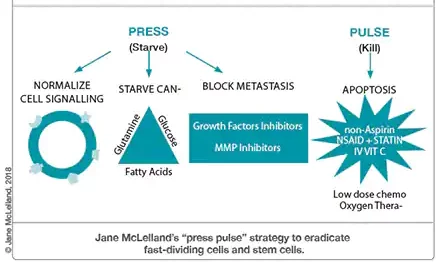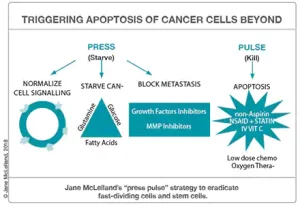
Sugar!! Okay or harmful for cancer patients??
I was alarmed to watch an interview released this weekend by a big hitting social influencer in the cancer space that suggested cancer cells and the tumour microenvironment are separate compartments and need a different approach. The tumour microenvironment (TME) is an integral part of the cancer. It was classified as a cancer Hallmark in about 2015/2016. You cannot influence one without influencing the other. They are INTERLINKED and cancer is metabolically flexible, if you block one route, it uses another!
The video was released on social media over the weekend with a reference to the following article which discusses how cancer cells use mostly glutamine (but not only glutamine) and how the immune cells in the tumour microenvironment use glucose (N.B. not all immune cells are good).
You can read it here: https://www.ncbi.nlm.nih.gov/pmc/articles/PMC8122068/
The suggestion was that you need to starve glutamine and fat and not worry about sugar!! Whoa!!! Just wait a minute!
What is going on here is a symbiotic feeding process where cells in the tumour microenvironment are undergoing glycolysis, i.e. breaking down a lot of glucose for energy and this fermentation process releases lactate, which was previously thought to be just a waste product. Cancer doesn’t waste anything. It turns out that the cancer cells have an avid appetite for lactate, which is the by-product of the glycolysis. Cancer cells convert the lactate back to something called pyruvate to use in the OXPHOS pathway. Glutamine also uses this pathway too.
This phenomenon is called the Reverse Warburg effect, first described by my friend Professor Michael Lisanti and is something I discuss in my online course and in my book. This latest research was to find out which cells in the TME take up the most glucose. The lab discovered that glucose is mostly taken up by myeloid cells, T effector cells and then cancer cells. Note cancer cells do use glucose!
The other issue is that the video on social media suggests the myeloid cells are immune cells so are ‘good’. Not so. Read this!
Even T effector cells, often thought of as the ‘good’ immune cells which should fight the cancer do not help either! New research just out shows they also suppress immunotherapy.
Exhausted T cells in tumors gain suppressor activity and can restrain immunity | Nature Immunology

So what to do?! In my book you will see the above diagram, which demonstrates my press/pulse or starve/kill strategy. Starve the tumour first, which will stop the immunosuppression, then you can reboot the immune system! I used cimetidine to reverse the raised TH2 (humoral immune response) to rebalance and increase the TH1 (cellular immune response). Propranolol is also good at this and one of my favourite off label drugs as it works to starve cancer, block growth factors as well. Although please note it blocks late stage autophagy so you probably should drop it during a ferroptosis phase as you need ferritinophagy.
So the answer is to block synergistic pathways! Cancer is metabolically flexible! OXPHOS is used by glutamine and lactate. Glycolysis uses glucose. Professor Lisanti described how he blocked the OXPHOS pathway with increasing amounts doxycycline which then made the cancer instead use the weaker glycolysis pathway. He then blocked the glycolysis pathway with vitamin C and berberine. It was lethal to the breast cancer cells he was testing.
Worn out record… combinations peeps!
Don’t start taking lots of sugar or high glycaemic fruits like ripe bananas, mangoes, pineapple in quantity. Breast, prostate cancer and colon cancer in particular learn to use Glut5 which is the fructose receptor.
“Tumors can also metabolize fructose. This has been shown for a variety of tumor types arising from the breast, brain, prostate, ovary, pancreas, intestine, lung, liver, kidney, and blood ( [5, 12]; breast [13, 14], brain [15, 16], prostate [17], ovary (Jin et al., [18]), pancreas [19, 20], intestine [21], lung [22,23,24], liver [25], kidney [26], and blood [27, 28]). In many of these cases, fructose has been shown to enter the cell through a membrane transporter, GLUT5, and then undergo metabolism into downstream glycolytic intermediates.”
Taken from Liang, R.J., Taylor, S., Nahiyaan, N. et al. GLUT5 (SLC2A5) enables fructose-mediated proliferation independent of ketohexokinase. Cancer Metab 9, 12 (2021). https://doi.org/10.1186/s40170-021-00246-9
Be careful my friends.
